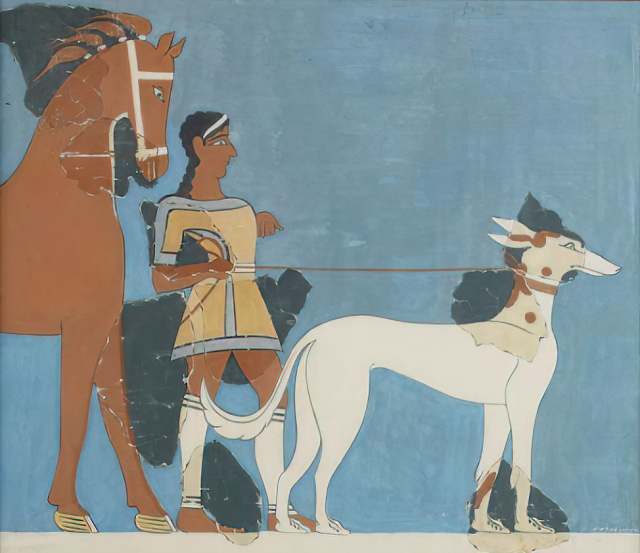Tiryns is the site of a Mycenaean palace and city where the hero Heracles is thought to have resided while he performed his twelve labors. Although it originated before the Bronze Age, it reached its height between 1400 and 1200 BCE and was considered one of the most important centers of the Mycenaean world, especially in Argolis. Tiryns is first referenced by Homer, who praised its massive walls. Ancient tradition held that the walls were built by the Cyclopes because only giants of superhuman strength could have lifted the enormous stones. Tradition also associates the walls with Proetus, the sibling of Acrisius, king of Argos. According to the legend Proetus, pursued by his brother, fled to Lycia. With the help of the Lycians, he managed to return to Argolis. There, Proetus occupied Tiryns and fortified it with the assistance of the cyclopes.
The city's acropolis was constructed in three phases, the first at the end of the Late Helladic II period (1500–1400 BCE), the second in Late Helladic III (1400–1300 BCE), and the third at the end of the Late Helladic III B (1300–1200 BCE). The palace of the king inside the citadel was similar in construction to that of Mycenae. The walls were decorated with alabaster slabs along the lower zones with rosettes and flowers in relief with frescoes embellishing the upper zones. Mycenaean frescoes were similar in style to those of Minoan Crete and depicted religious ceremonies, processions, hunters, and warriors.
Tiryns was affected by the social collapse at the end of the Bronze Age but survived and was inhabited continuously until the middle of the 8th century BCE. Then in the 5th century BCE, when Cleomenes I of Sparta defeated the Argives, their slaves occupied Tiryns, according to Herodotus. The Argives eventually avenged their defeat, though, in 468 BCE when they completely destroyed both Mycenae and Tiryns, and, according to Pausanias, transferred the residents to Argos.
Tiryns was one of the sites excavated by Heinrich Schliemann in 1884-1885. Schliemann initially thought the ruins were medieval and almost destroyed them to excavate deeper seeking Mycenaean treasures. Excavations continue today under the direction of the German Archaeological Institute at Athens and the University of Heidelberg.
 |
| Watercolor of a fresco depicting a Mycenaean hunt scene from the palace of Tiryns, Greece at the Royal Ontario Museum in Toronto, Canada courtesy of the museum (enlarged with AI software). |
 |
| Tiryns wall-painting fragments with a representation of wild-boar hunt, from the later Tiryns palace, 14-13th century BCE, National Archaeological Museum of Athens courtesy of Carole Raddato. |


No comments:
Post a Comment